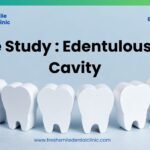11 Best Practices for Healthy Teeth and Gums :
Introduction
A healthy smile is not just about looking good; it’s a reflection of your overall well-being. Your teeth and gums play a crucial role in your daily life, from helping you eat and speak to contributing to your self-confidence. However, maintaining good oral health goes beyond brushing and flossing; it involves a combination of healthy habits and regular dental care. In this comprehensive guide, we’ll explore 11 best practices for healthy teeth and gums, helping you achieve a bright, confident, and pain-free smile.
1.Brush Your Teeth Twice Daily
The foundation of good oral hygiene begins with regular brushing. Brush your teeth at least twice a day, ideally in the morning and before bedtime. Use a soft-bristle toothbrush and fluoride toothpaste. Be gentle when brushing, as aggressive scrubbing can harm your enamel and gums.
2.Floss Daily
Flossing is often overlooked but is equally vital for oral health. Flossing helps remove food particles and plaque from between your teeth and along the gumline, where your toothbrush might not reach. Make it a habit to floss once a day to prevent cavities and gum disease.
3.Choose the Right Toothbrush
Selecting the right toothbrush can make a significant difference in your oral health. Opt for a soft-bristle brush with a comfortable grip. Ensure that the brush head is small enough to reach all areas of your mouth easily. Electric toothbrushes are also an excellent choice as they can be more effective in removing plaque.
4.Maintain a Proper Brushing Technique
Brushing isn’t just about the frequency but also the technique. Use a gentle circular motion and spend at least two minutes thoroughly brushing all surfaces of your teeth. Don’t forget to clean your tongue as well, as it can harbor bacteria that contribute to bad breath.
5.Use Fluoride Toothpaste
Fluoride is a mineral that helps strengthen tooth enamel and prevents tooth decay. Make sure your toothpaste contains fluoride. If you have specific dental concerns, such as sensitivity or gum issues, consult your dentist for recommendations on the best toothpaste for your needs.
6.Rinse with Mouthwash
Mouthwash can be a valuable addition to your oral care routine. It can help reduce plaque, fight bacteria, and provide a refreshing sensation. Look for a mouthwash that carries the American Dental Association (ADA) seal of approval to ensure it meets established standards for safety and effectiveness.
7.Limit Sugary and Acidic Foods
Your diet has a significant impact on your oral health. Excessive consumption of sugary and acidic foods and drinks can lead to tooth decay and erosion of enamel. Limit your intake of sugary snacks, carbonated beverages, and acidic fruits. When you do consume them, rinse your mouth with water afterward or chew sugar-free gum to help neutralize acids.
8.Eat a Balanced Diet
A well-balanced diet rich in fruits, vegetables, lean proteins, and whole grains not only benefits your overall health but also supports your oral health. Foods high in calcium, like dairy products, help strengthen teeth, while vitamin-rich foods promote healthy gums.
9.Stay Hydrated
Water is your mouth’s best friend. It helps wash away food particles, bacteria, and acids that can lead to tooth decay. Drinking water, especially after meals, helps maintain a clean and healthy mouth.
10.Avoid Tobacco Products
Smoking and using tobacco products can have devastating effects on your oral health. They increase the risk of gum disease, tooth decay, and oral cancer. If you’re a tobacco user, quitting is one of the most significant steps you can take to improve your oral health.
11.Visit Your Dentist Regularly
Regular dental check-ups are essential for maintaining healthy teeth and gums. Your dentist can identify issues early, provide professional cleanings, and offer advice on how to improve your oral care routine. Most dental professionals recommend visiting your dentist every six months, but your specific needs may vary.
Conclusion
Maintaining healthy teeth and gums is not just about aesthetics; it’s essential for your overall well-being. By following these 11 best practices, you can achieve and maintain a beautiful, confident smile while reducing the risk of dental problems such as cavities, gum disease, and tooth loss. Remember that your oral health is an integral part of your overall health, so invest time and effort into caring for your teeth and gums. Your future self will thank you for it with a lifetime of healthy smiles.




